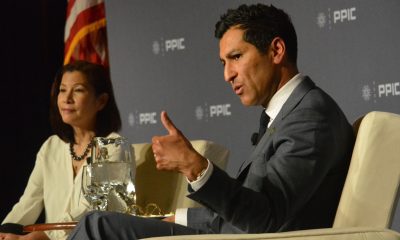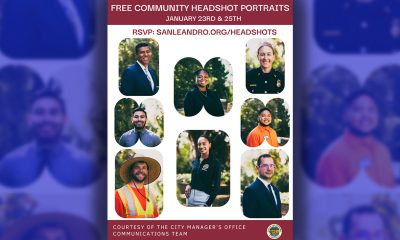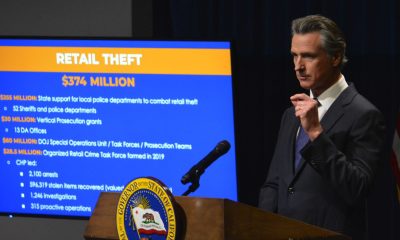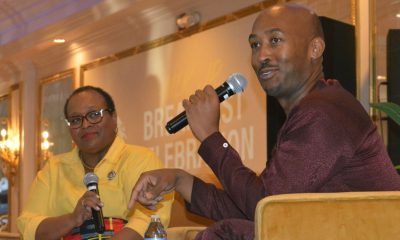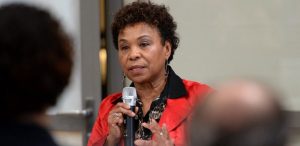Community
Senior Travel Troupe to Visit Historical Sites in Sacramento
The City of San Leandro Recreation and Human Services Department’s Senior Travel Troupe invites community members to sign up for a tour of historic Sacramento on Monday, March 23.
<p>
The tour will visit the California State Railroad Museum, the State Capitol, and Old Town Sacramento. Registration is now available for active adults aged 50 and over.
The California State Railroad Museum complex is one of Sacramento’s largest and most popular visitor destinations. The facility includes exhibits and beautifully restored railroad cars and locomotives to illustrate railroad history in California and the West.
Throughout the main Railroad History Museum building, 21 restored locomotives and cars and numerous exhibits illustrate how railroads have shaped people’s lives, the economy, and the culture of California and the West.
The State Capitol building houses the legislative and executive offices of state government, a museum dedicated to telling the political history of the state, as well as an art museum. The historic waterfront in Old Town Sacramento is the site of thriving shopping and entertainment district.
Space is limited, so prompt registration is encouraged. To sign up, please visit www.sanleandrorec.org and follow the course registration links to course code #34616.
Participants also may sign up in person at the Marina Community Center, located at 15301 Wicks Blvd., or at the Senior Community Center, located at 13909 E. 14th Street. For more information, please call (510) 577-3462.
Community
The Year Ahead: Assembly Speaker Rivas Discusses Priorities, Problems
Assembly Speaker Robert Rivas shared his legislative priorities and vision for the future of California during a luncheon hosted by the Public Policy Institute of California (PPIC) in downtown Sacramento.
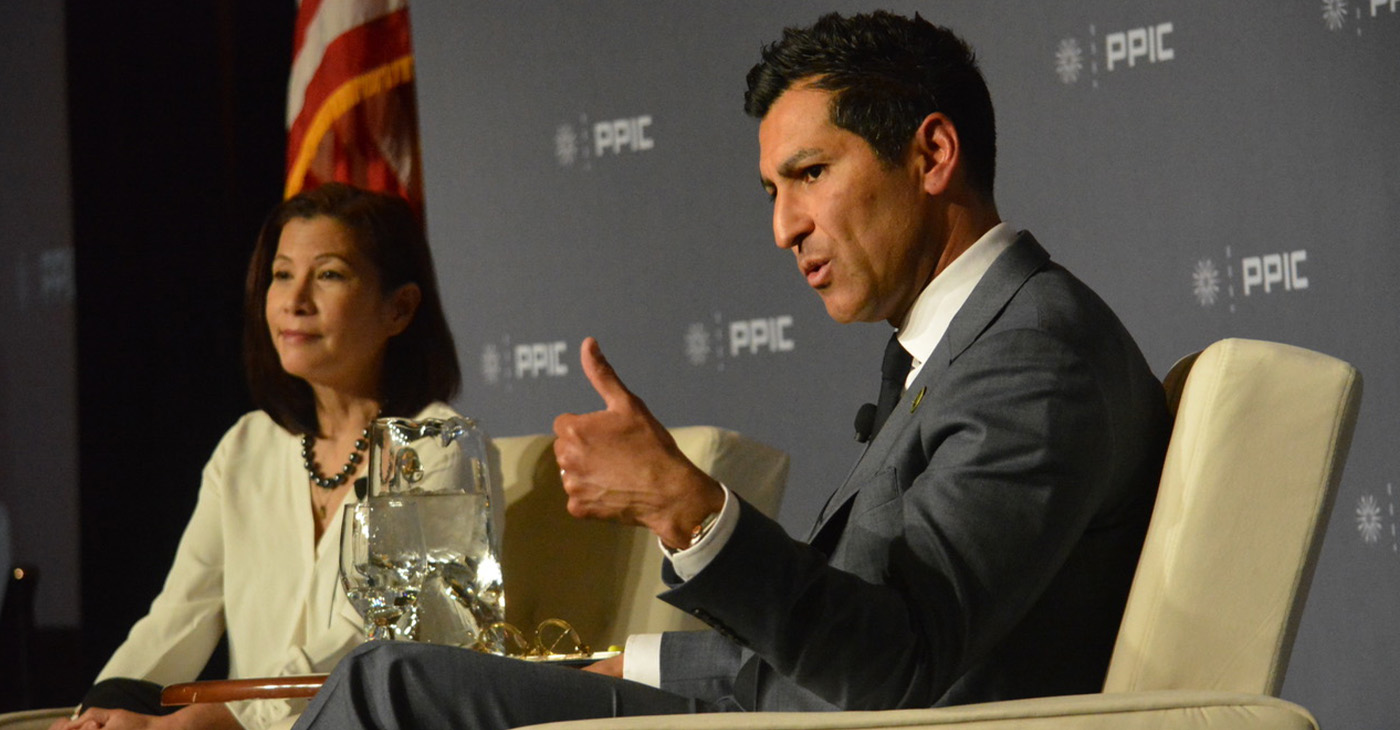
By Antonio Ray Harvey, California Black Media
Assembly Speaker Robert Rivas shared his legislative priorities and vision for the future of California during a luncheon hosted by the Public Policy Institute of California (PPIC) in downtown Sacramento.
Titled a “Conversation with Assembly Speaker Robert Rivas” for PPIC’s 2024 Speaker Series on California’s Future, the 44-year-old Democrat lawmaker from Hollister, who represents the 29th Assembly District, is the 71st speaker of the Assembly.
The discussion at the Sheraton Hotel took place about two weeks after Gov. Gavin Newsom presented his $291 Billion January budget proposal.
“These are going to be difficult times,” Rivas said of the task of balancing a budget that has been estimated separately by the Department of Finance and Legislative Analyst’s Office to have a deficit between $38 billion and $68 billion. “It’s going to underpin everything we get done this year. It’s going to impact everything.”
PPIC’s Speaker Series on California’s Future allows “leaders, lawmakers, and changemakers with diverse perspectives to participate critically, constructively, and collaboratively in public conversations,” according to PPIC.
PPIC president and Chief Executive Officer Tani Cantil-Sakauye was the moderator of the 60-minute discussion that about 200 guests attended.
Rivas said right after he was sworn in as the Assembly leader that among his top priorities are mental and medical wellness, public safety, affordable housing, homelessness, education, the state’s entry-level scientists’ wages, and climate change.
He added that his goal is to focus on both urban and rural areas across the state, including improving public services and infrastructure. He explained that wildfires, flooding, droughts, and agriculture productivity are additional concerns.
Rivas shared that legislators should have goals of “addressing critical issues” that lead to “progress, affordability, and improving day-to-day” quality of life for all residents in California.
“These issues are consistent across the state. I prioritize no region over the other,” Rivas told Cantil-Sakauye, the former chief justice of the California Supreme Court.
During the question-and-answer portion of the conversation, Michael L. Younger, the Vice President of Workforce, Strategy, and Innovation at Calbright College asked Rivas about how the state can help individuals with workforce training and achieve labor success without relying on traditional colleges and university.
“(I am) speaking to those who may not see themselves on the college track but also have value to society,” Younger asked Rivas.
In his response, Rivas said the labor force needs individuals with work training skills, especially with the rise and usage of artificial intelligence.
“The need to have that transition can’t come soon enough but at the same time we have a responsibility to train displaced workers,” Rivas said.
Carmen-Nicole Cox, director of Government Affairs for American Civil Liberties Union – California Action, asked the Speaker would he accept the “community’s invitation” to take a public health approach to addressing public safety rather than one that criminalizes, demoralizes and focuses on incarceration.
Rivas responded to Cox’s question by explaining that an impartial evaluation of public safety should be made initially before providing a resolution.
“Our approach to addressing public safety is to, first, listen, to be fair throughout our process and to find solutions. Does that include addressing public health? Absolutely,” he said.
Commentary
Commentary: Republican Votes Are Threatening American Democracy
In many ways, it was great that the Iowa Caucuses were on the same day as Martin Luther King Jr. Day. We needed to know the blunt truth. The takeaway message after the Iowa Caucuses where Donald Trump finished more than 30 points in front of Florida Gov. De Santis and former South Carolina Governor Nikki Haley boils down to this: Our democracy is threatened, for real.

By Emil Guillermo
In many ways, it was great that the Iowa Caucuses were on the same day as Martin Luther King Jr. Day.
We needed to know the blunt truth.
The takeaway message after the Iowa Caucuses where Donald Trump finished more than 30 points in front of Florida Gov. De Santis and former South Carolina Governor Nikki Haley boils down to this: Our democracy is threatened, for real.
And to save it will require all hands on deck.
It was strange for Iowans to caucus on MLK day. It had a self-cancelling effect. The day that honored America’s civil rights and anti-discrimination hero was negated by evening.
That’s when one of the least diverse states in the nation let the world know that white Americans absolutely love Donald Trump. No ifs, ands or buts.
No man is above the law? To the majority of his supporters, it seems Trump is.
It’s an anti-democracy loyalty that has spread like a political virus.
No matter what he does, Trump’s their guy. Trump received 51% of caucus-goers votes to beat Florida Gov. Ron DeSantis, who garnered 21.2%, and former South Carolina Gov. Nikki Haley, who got 19.1%.
The Asian flash in the pan Vivek Ramaswamy finished way behind and dropped out. Perhaps to get in the VP line. Don’t count on it.
According to CNN’s entrance polls, when caucus-goers were asked if they were a part of the “MAGA movement,” nearly half — 46% — said yes. More revealing: “Do you think Biden legitimately won in 2020?”
Only 29% said “yes.”
That means an overwhelming 66% said “no,” thus showing the deep roots in Iowa of the “Big Lie,” the belief in a falsehood that Trump was a victim of election theft.
Even more revealing and posing a direct threat to our democracy was the question of whether Trump was fit for the presidency, even if convicted of a crime.
Sixty-five percent said “yes.”
Who says that about anyone of color indicted on 91 criminal felony counts?
Would a BIPOC executive found liable for business fraud in civil court be given a pass?
How about a BIPOC person found liable for sexual assault?
Iowans have debased the phrase, “no man is above the law.” It’s a mindset that would vote in an American dictatorship.
Compare Iowa with voters in Asia last weekend. Taiwan rejected threats from authoritarian Beijing and elected pro-democracy Taiwanese vice president Lai Ching-te as its new president.
Meanwhile, in our country, which supposedly knows a thing or two about democracy, the Iowa caucuses show how Americans feel about authoritarianism.
Some Americans actually like it even more than the Constitution allows.
About the Author
Emil Guillermo is a journalist and commentator. He does a mini-talk show on YouTube.com/@emilamok1.
Community
Report: Black Enrollment at Calif. Colleges and Universities Remains Low and Flat
A report the non-partisan Legislative Analyst’s Office (LAO) released last week revealed that Black student enrollment at California’s institutions of higher learning has remained relatively low and flat. Over the last two decades, for example, the study found that, compared to all other ethnic groups, total Black student enrollment at the University of California (UC) has increased by a miniscule one percentage point.

By California Black Media
A report the non-partisan Legislative Analyst’s Office (LAO) released last week revealed that Black student enrollment at California’s institutions of higher learning has remained relatively low and flat.
Over the last two decades, for example, the study found that, compared to all other ethnic groups, total Black student enrollment at the University of California (UC) has increased by a miniscule one percentage point.
During that period, Black young adults from 18 to 24 years old accounted for between 7% and 8% of the state’s total population but the number enrolled at UC remained in a disproportionately low range, between 4% and 5%.
White student enrollment at UC decreased the most over that time period from 42% in 2000 to 23% in 2021.
Latino student enrollment at UC increased from 14% to 31% and Asian American and Pacific Islander (AAPI) student enrollment remained relatively constant from 39% to 40%. But the AAPI total percentage of AAPI students attending UC remained at almost two times higher than the state’s total population of college-aged AAPI students, which moved from 13% to 15% over that period.
Titled “Student Access,” the report focuses on pathways and barriers to enrollment in higher ed, examines admissions policy, categorizes enrollment by academic specialization, and provides demographic information on students attending California’s private universities and public university systems: California Community Colleges (CCC), California State University (CSU) and the University of California (UC).
“The series has two main objectives,” the report’s introduction reads.
“The first is to help legislators, staff, and the general public track many of the key changes that higher education has undergone over the past few decades,” it continues. “The second is to help legislators and staff leverage their better understanding of the past to aid them in better navigating the future.”
According to the LAO, the report highlights priorities it recommends members of the Legislature to consider in their decision-making around the budget or higher education policy.
-

 Activism4 weeks ago
Activism4 weeks agoOakland Post: Week of March 20 – 26, 2024
-

 #NNPA BlackPress3 weeks ago
#NNPA BlackPress3 weeks agoMayor, City Council President React to May 31 Closing of Birmingham-Southern College
-

 #NNPA BlackPress3 weeks ago
#NNPA BlackPress3 weeks agoCOMMENTARY: D.C. Crime Bill Fails to Address Root Causes of Violence and Incarceration
-

 #NNPA BlackPress3 weeks ago
#NNPA BlackPress3 weeks agoFrom Raids to Revelations: The Dark Turn in Sean ‘Diddy’ Combs’ Saga
-

 #NNPA BlackPress3 weeks ago
#NNPA BlackPress3 weeks agoCOMMENTARY: Lady Day and The Lights!
-

 #NNPA BlackPress3 weeks ago
#NNPA BlackPress3 weeks agoBaltimore Key Bridge Catastrophe: A City’s Heartbreak and a Nation’s Alarm
-

 #NNPA BlackPress3 weeks ago
#NNPA BlackPress3 weeks agoBaltimore’s Key Bridge Struck by Ship, Collapses into Water
-

 Activism3 weeks ago
Activism3 weeks agoOakland Post: Week of March 27 – April 2, 2024

